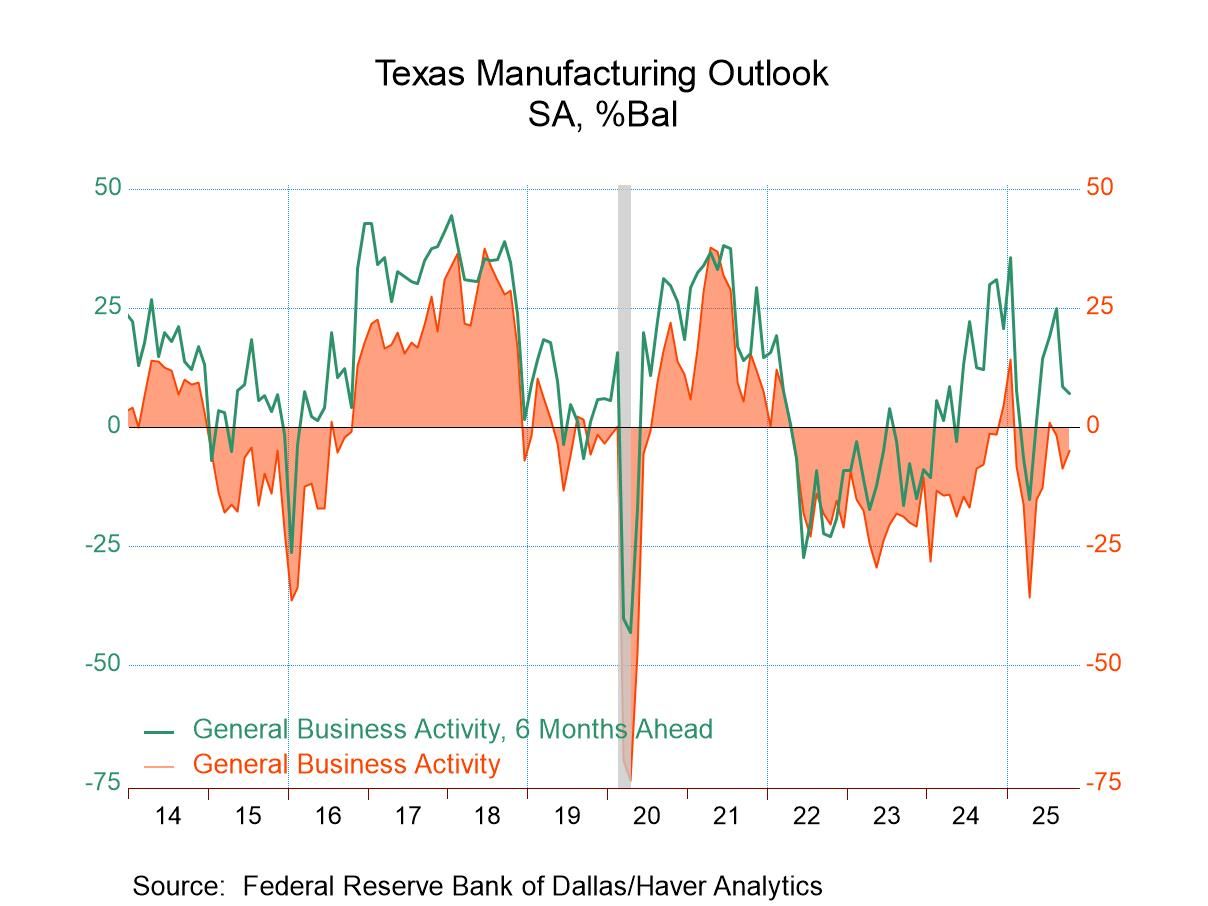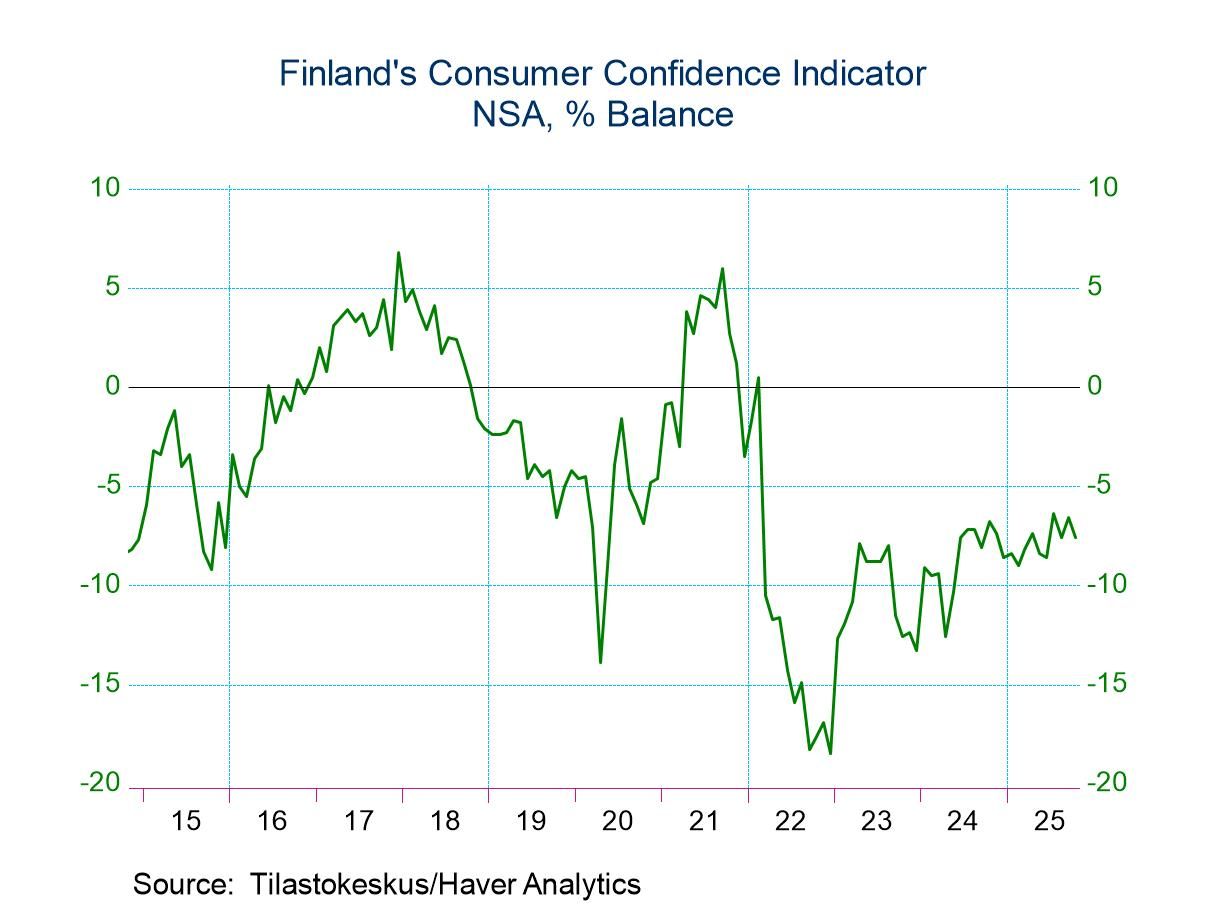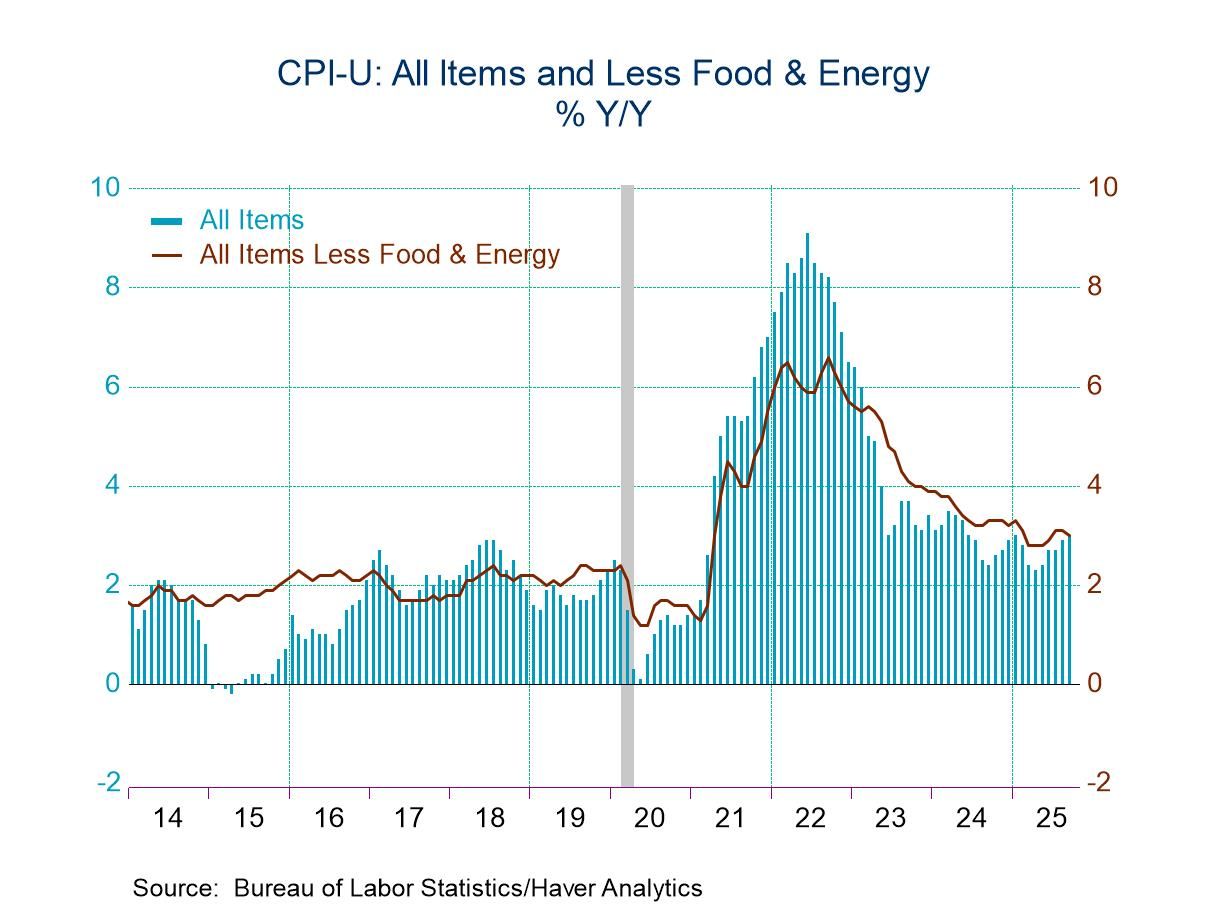 Global| Jan 07 2009
Global| Jan 07 2009ADP Report: Payroll Employment Fell By 693,000
by:Tom Moeller
|in:Economy in Brief
Summary
The payroll processor ADP indicated in its latest National Employment Report that December private nonfarm payrolls fell 693,000. The decline followed a revised 476,000 November drop that was much deeper than the initial estimate. The [...]
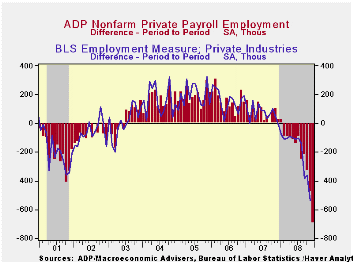 The
payroll processor ADP indicated in its latest National Employment
Report that December private nonfarm payrolls fell 693,000. The decline
followed a revised 476,000 November drop that was much deeper than the
initial estimate. The latest was the eleventh consecutive monthly
decline. During the last three months payrolls have fallen 1.3%.
The
payroll processor ADP indicated in its latest National Employment
Report that December private nonfarm payrolls fell 693,000. The decline
followed a revised 476,000 November drop that was much deeper than the
initial estimate. The latest was the eleventh consecutive monthly
decline. During the last three months payrolls have fallen 1.3%.
The U.S. Bureau of Labor Statistics will report on December payroll employment this Friday. Last month, the 476,000 worker decline (-1.6% y/y) in ADP's measure of private nonfarm payrolls was accompanied by a 540,000 worker decline (-1.8% y/y) in the BLS measure of private sector payrolls.
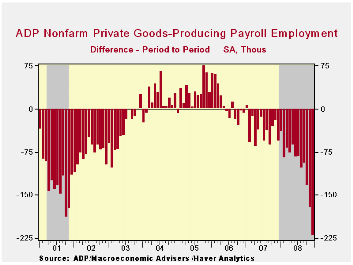 According
to ADP and Macro Advisers, the correlation between the monthly
percentage change in the ADP estimate and that in the BLS data is 0.90.
ADP indicated in today's report that it is the first to incorporate
key methodological revisions. These revisions include improved modeling
techniques and additional data sources to better accommodate inherent
differences between the ADP and BLS data.
The impact on recent
estimates was to revise the monthly declines in employment much deeper.
According
to ADP and Macro Advisers, the correlation between the monthly
percentage change in the ADP estimate and that in the BLS data is 0.90.
ADP indicated in today's report that it is the first to incorporate
key methodological revisions. These revisions include improved modeling
techniques and additional data sources to better accommodate inherent
differences between the ADP and BLS data.
The impact on recent
estimates was to revise the monthly declines in employment much deeper.
Employment in the service producing industry was most pronounced. December payrolls fell 473,000 (-1.5% y/y), the eleventh consecutive monthly decline and the service sector estimates are the source for most of the downward revision in the overall payroll figure. Medium sized payrolls fell 215,000 (-1.8% y/y) and small sized payrolls fell 201,000 (-1.1% y/y). Large service producing payrolls dropped by 57,000 (-1.8% y/y).
Weakness in goods producing
payrolls added to the service sector's decline. Payrolls fell by
220,000 (-5.6% y/y). The largest decline was amongst medium sized
payrolls which fell 106,000 (-5.5% y/y) followed by an 80,000 (-5.3%
y/y) drop in small sized payrolls. Large payrolls fell 34,000 (-6.4%
y/y).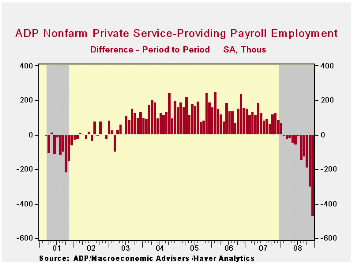
Employment in the manufacturing sector fell 120,000 (-5.1% y/y) It has fallen in most every month since 2001.
ADP compiled the estimate from its database of individual companies' payroll information. Macroeconomic Advisers, LLC, the St. Louis economic consulting firm, developed the methodology for transforming the raw data into an economic indicator.
The ADP National Employment Report data is maintained in Haver's USECON database; historical data go back to December 2000. The figures in this report cover only private sector jobs and exclude employment in the public sector, which rose an average 11,083 during the last twelve months.
The full ADP National Employment Report can be found here, and the ADP methodology is explained here.
| LAXEPA@USECON | December | November | Y/Y | 2008 | 2007 | 2006 |
|---|---|---|---|---|---|---|
| Nonfarm Private Payroll Employment (m/m Chg.) | -693,000 | -476,000 | -2.2% | -0.4 | 1.2% | 2.0% |
Tom Moeller
AuthorMore in Author Profile »Prior to joining Haver Analytics in 2000, Mr. Moeller worked as the Economist at Chancellor Capital Management from 1985 to 1999. There, he developed comprehensive economic forecasts and interpreted economic data for equity and fixed income portfolio managers. Also at Chancellor, Mr. Moeller worked as an equity analyst and was responsible for researching and rating companies in the economically sensitive automobile and housing industries for investment in Chancellor’s equity portfolio. Prior to joining Chancellor, Mr. Moeller was an Economist at Citibank from 1979 to 1984. He also analyzed pricing behavior in the metals industry for the Council on Wage and Price Stability in Washington, D.C. In 1999, Mr. Moeller received the award for most accurate forecast from the Forecasters' Club of New York. From 1990 to 1992 he was President of the New York Association for Business Economists. Mr. Moeller earned an M.B.A. in Finance from Fordham University, where he graduated in 1987. He holds a Bachelor of Arts in Economics from George Washington University.



